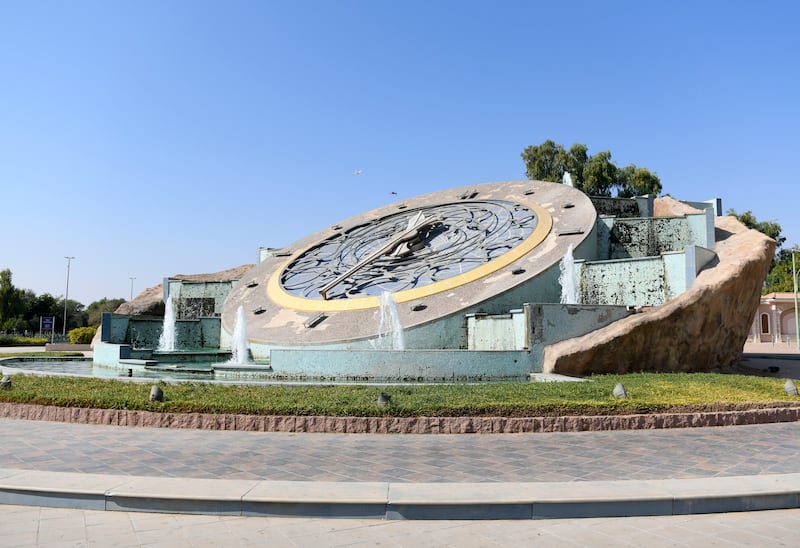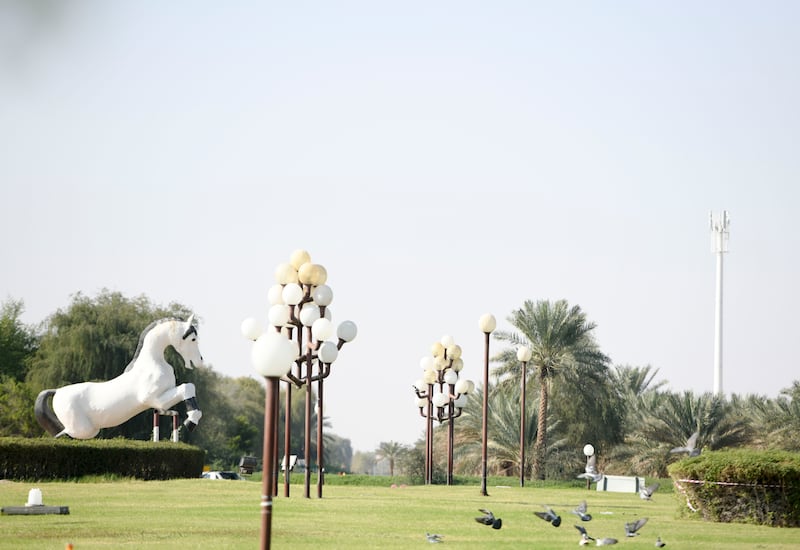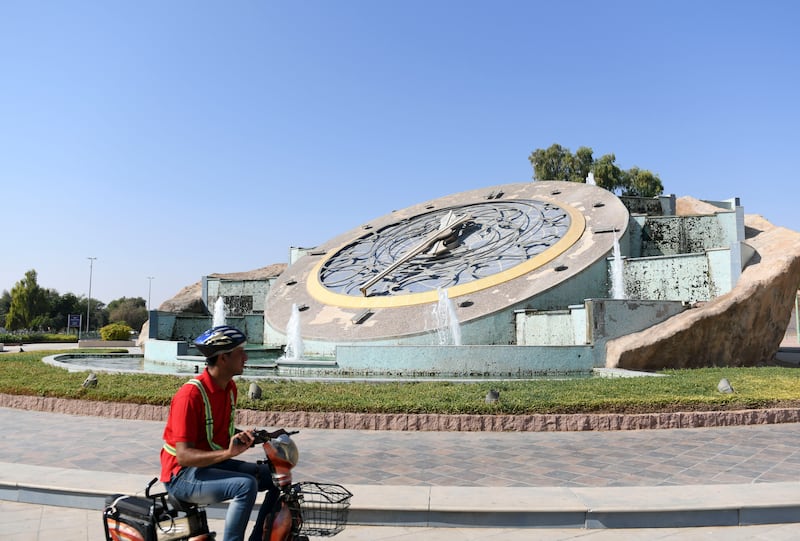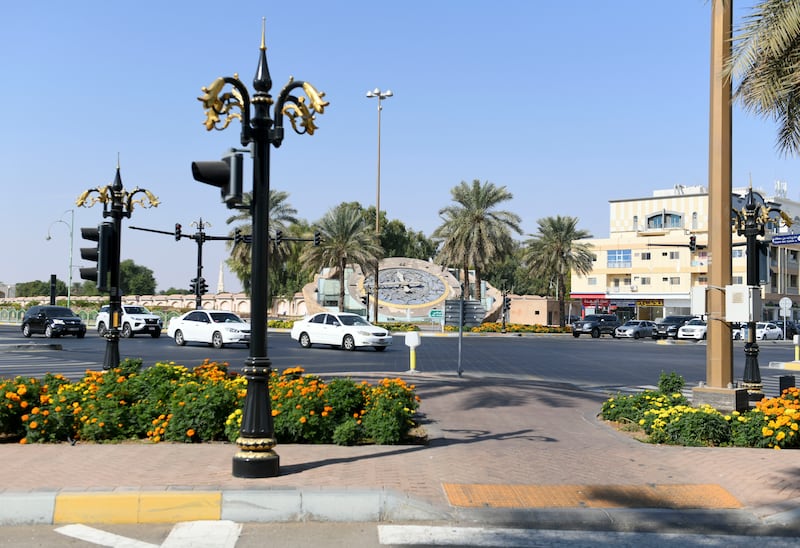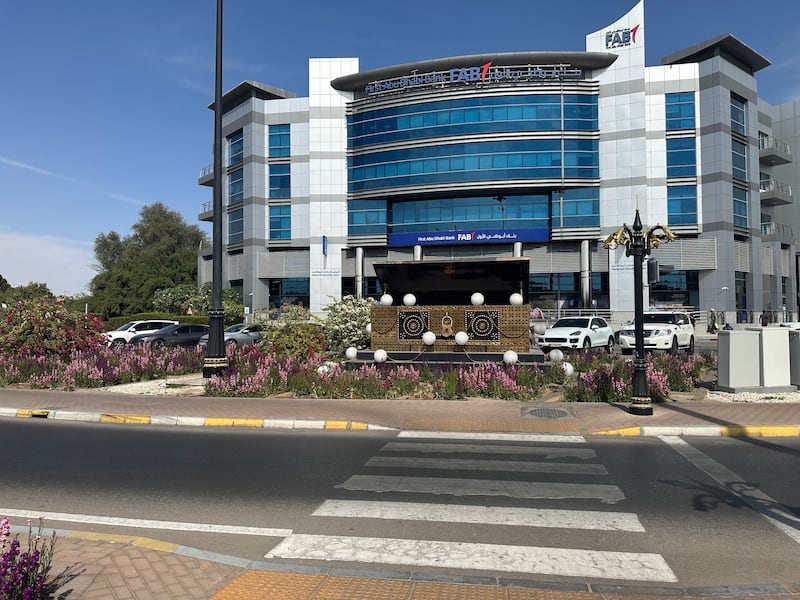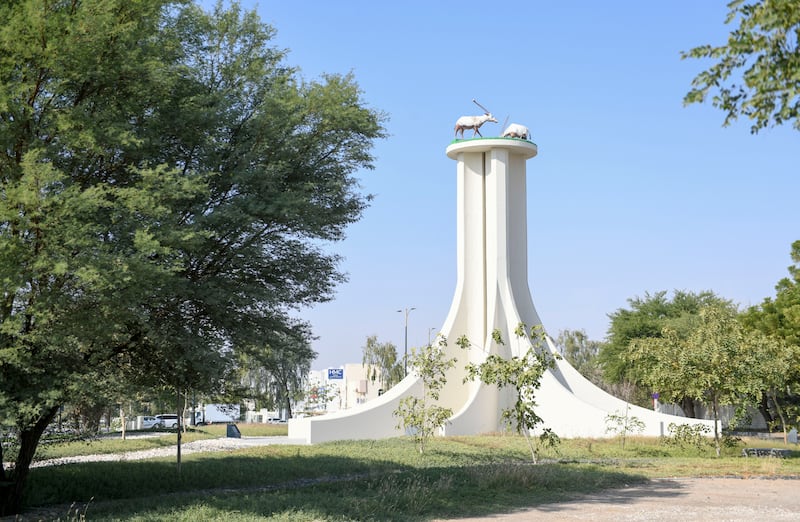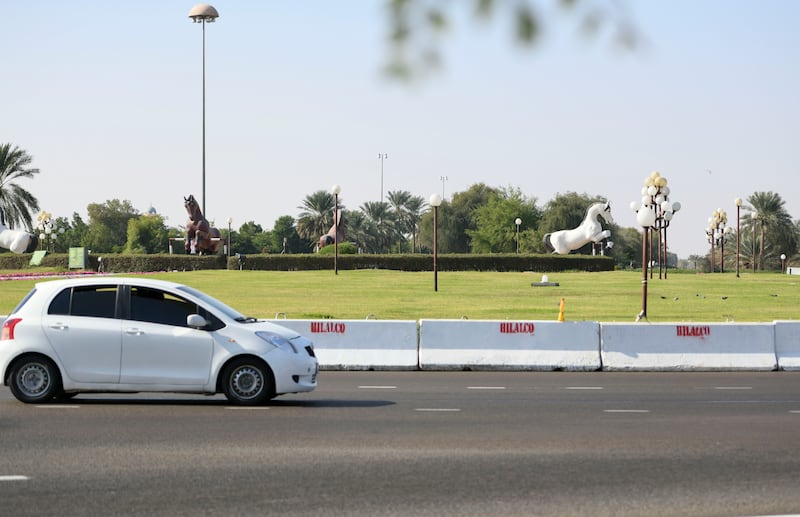For decades, Al Ain has been famous for its road system and the city's large number of roundabouts, often adorned with sculptures and public art.
Now authorities are planning a major transformation of the roads network, in which some of the roundabouts will be replaced by underpasses, bridges and traffic lights.
The plan aims to reduce travel times for motorists by improving traffic flow and enhancing the quality of life of the public.
Abu Dhabi's Department of Municipality and Transport said the revamp would take place in stages, with its historic sculptures moved to other locations to preserve the city's heritage. It is unclear how many roundabouts will be changed or when the project will be completed.
"The 2010 comprehensive transportation plan for Al Ain 2030 was approved to provide infrastructure and urbanisation to enhance its capabilities to meet the expected population and urban growth requirements for the next 20 years," a DMT representative told The National.
"Updates in 2023 are reflected in the evolving city plan and completed projects, as part of the Municipality's efforts to preserve well-known landmarks associated with the city."
Roundabouts were introduced in the UAE in the 1950s and were based on the UK's traffic system. However, due to the high volume of traffic on the roads, they have been slowly phased out to make way for more efficient flyovers.
Preserving ancient landmarks
Al Ain is home to many roundabouts, including the famous Tawam roundabout, which is one of the city's oldest that was originally positioned as the first roundabout for motorists arriving in Al Ain from Abu Dhabi.
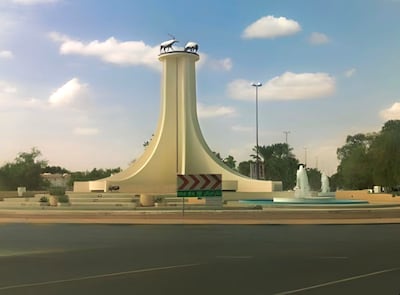
It became a landmark in the city thanks to its four distinctive horse statues – two black and two white – located behind hedges, palm trees, street maps and flower-lined walkways.
Now, the roundabout is being redeveloped into an underpass tunnel with a graded traffic junction to improve congestion.
It is unclear where the horse statues will be relocated. However, officials said efforts are being made to ensure that all landmark sculptures will be preserved.
Among the first to undergo the transformation was the Deer, Clock and Al Mandous roundabouts, in the heart of the city.
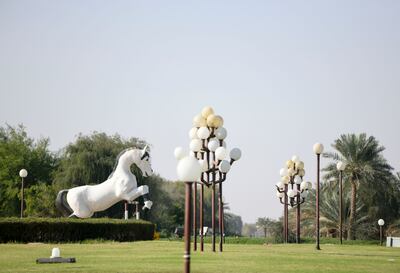
The sculpture originally erected at Al Mandous roundabout was installed at the intersection of Ali bin Abi Talib Street and Hessa bint Mohammed Street.
The Deer Roundabout, which features a statue of two Arabian oryx, was moved to the junction project in the Ma'aterid area at about the same time.
The Clock Tower Roundabout, built in 1968, also served as a point of reference and a symbol of the 135km distance between Dubai and Abu Dhabi. The oldest aerial photos on record show the roundabout in 1976.
Al Ain's identity
"These landmarks and roundabouts are very well known, even if they are no longer there in a form of a roundabout. When I give people directions I still say 'where the clock roundabout is,'" said Egyptian resident Manal Ibrahim, who has lived in Al Ain for about three decades.
"People who have lived in Al Ain for a long time know about these iconic landmarks as they have become part of the city's identity.
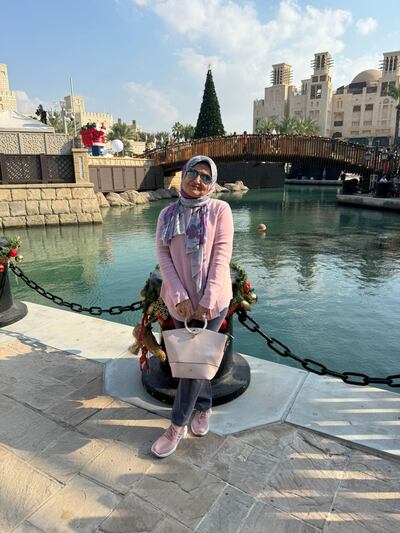
"I am very happy that we have kept these landmarks because it's what makes the city so special."
While fast-moving developments are taking place in the city, Ms Ibrahim said she liked that the traditions, heritage and old landmarks are being "cared for and saved by the country which adds a unique touch to the city".
Adeeb Sami, regional director of Aecom, a global infrastructure consulting company, has lived in Al Ain for three decades.
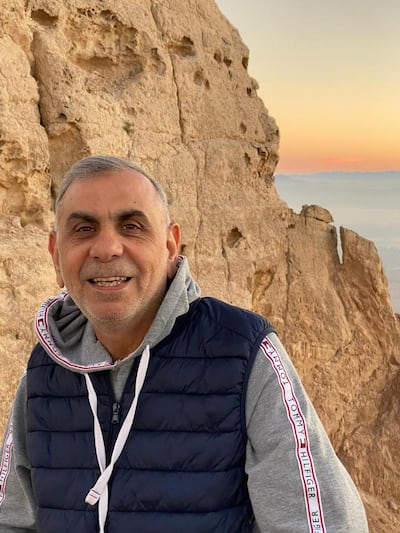
He said the city's road improvement project would attract more visitors and tourists, which will have a positive effect on the city's economy.
"There will be more spending and more business," he told The National, adding that it will also help to reduce congestion on the roads. "It will be better for the environment because of the reduction of travel time, helping to reduce emissions from cars and improve the air quality."
Mr Sami said Al Ain had an advantage over other cities in the UAE because it is not as heavily populated.
"Al Ain is a city with a different vision to Abu Dhabi and Dubai and it is not as populated as other cities in the UAE. It has been developed horizontally not vertically, which gives us an advantage when creating an intersection after removing the roundabouts," he said.
"There are no tall buildings in Al Ain so that is an advantage because the population per square kilometre is not like Abu Dhabi's, so that provides us with a margin that we can work with which provides flexibility in terms of changing the roundabouts."
